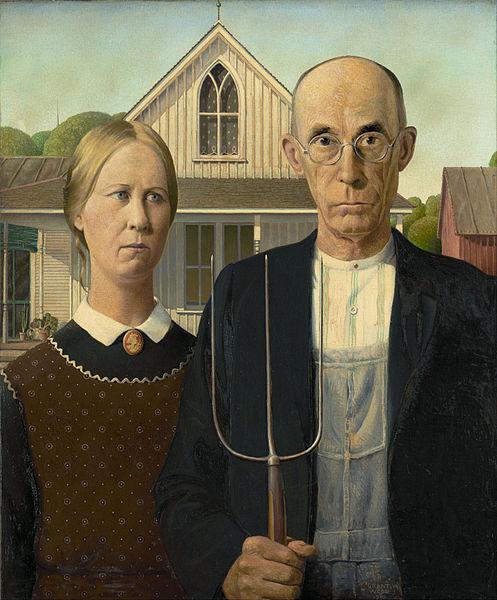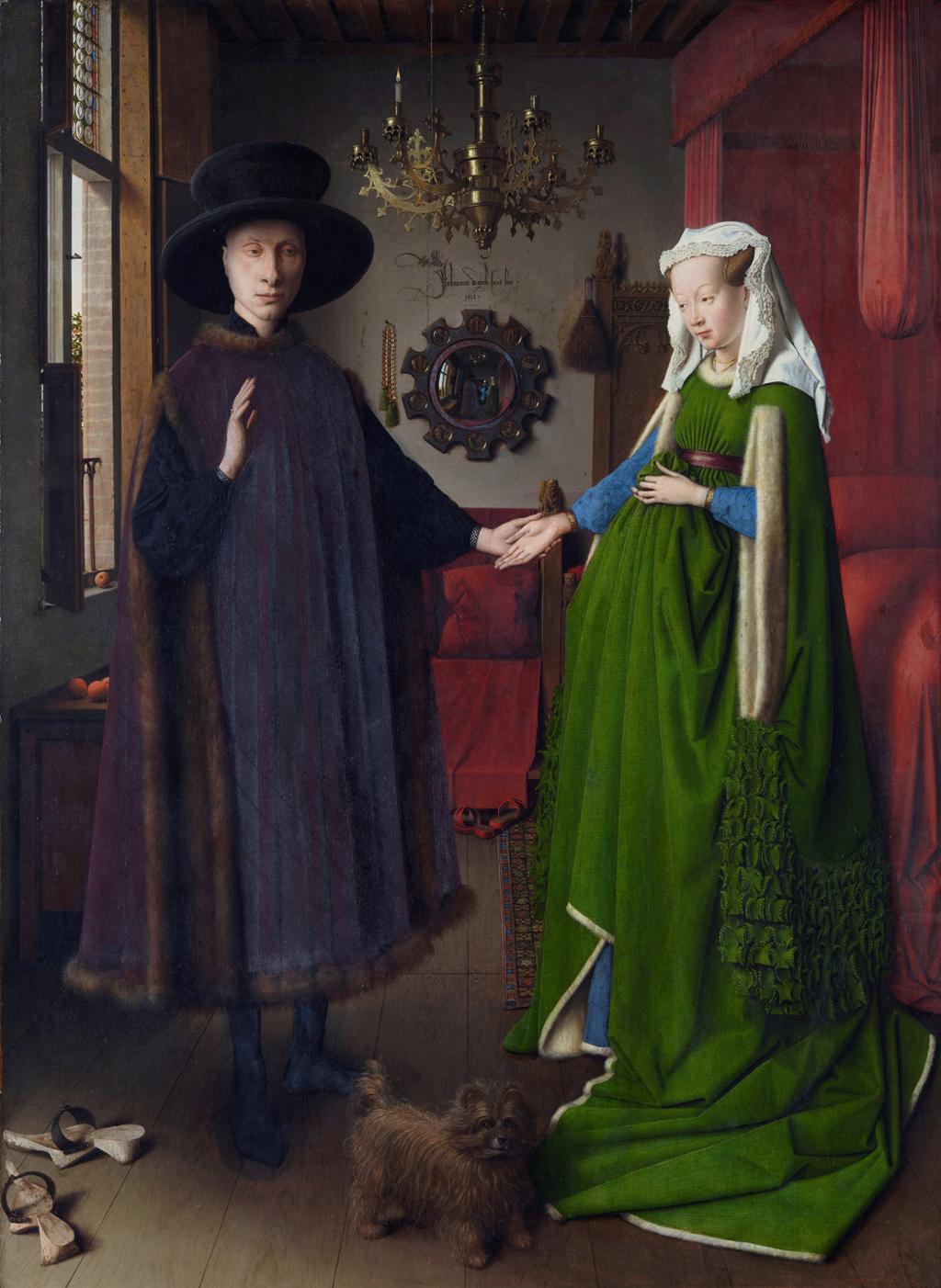Analysis of a Painting

Grant Wood (1891-1942) was an American artist who belonged to the Regionalism movement. At the time, Modernism was the leading art movement in Europe. The Regionalists wanted to create uniquely American art. Their works focused on telling stories, and were characterised by being figurative and narrative. Wood’s work focused on life in the American Midwest. American Gothic is one of the most important works of the Regionalistm Movement, and one of the most famous works of American art. Grant Wood wanted to create an image that depicted and celebrated the values of the Midwest, such as hard work, frugality, and Puritan ethics.
At the centre and forefront of the painting are a woman and a man. In the middle ground there is a white farm-house, which has a Gothic window with a lace curtain. We also see a red barn. In the background there is blue sky, with streaks of clouds or smoke. There are also stylised tree-tops. The couple are wearing modest, conservative clothes, and they look very serious and stern. The woman is looking The woman is looking towards the right-hand side of the frame, while the man appears to be staring directly at the viewer. The man is holding a pitchfork.
There is a lot of information crammed into the picture. The elements are placed on top of each other and within a confined frame, which makes the viewer feel slightly claustrophobic. It is a bright sunny day, and there is a lot of light on all elements in the picture. This makes it seem like the man and the woman, the house, the barn, the trees are all connected. The only shade is underneath the covered patio. We cannot see anything inside the house. The windows are dark or curtained-off. This makes the house seem secretive and closed. The Gothic window hints of religious faith, while the lace curtain tells us that they have tried to make their home look nice. The people’s clothes are simple, clean and well-kept. They have an appearance of cleanliness. The only nod to feminine adornment is the cameo brooch the woman wears. The only other extravagance visible in the picture are some green plants placed in pots on the patio. This makes it seem like these people are not rich, but they have enough to get by. They put pride in their appearance, in the sense that they look tidy and presentable.
The title of the painting, American Gothic, can be interpreted in several ways. We may see it as a comment on how America is different to Europe. Here, people don’t need the grand cathedrals with elaborate windows. They can keep their faith in a simple home, working hard every day. They do not need lavish displays of devotion to God. Their faith is simple and connected to their work and their home.
Another interpretation could be to consider 'Gothic' in terms of the literary genre. This puts a more sinister spin on the painting. Rather than being simply farmers who are hardworking and devoted to God, we ask ourselves: 'Why the pitchfork?' 'Why does there appear to be smoke streaking across the blue sky?' 'Are the people merely serious, or are they threatening?' It seems unlikely that this is an interpretation Wood intended, but the ambiguity of the image may be one reason why it remains so influential. However, it is generally accepted that the title of the painting comes from the architectural style of the house, which is found in Eldon, Iowa. This architectural style is called Carpenter Gothic and was popular between 1840-1870.

The style of American Gothic was inspired by Flemish art made between the 15th and 17th century. Flemish art was characterised by sharp and clear forms, naturalistic proportions, clear colours, usually in cool hues, and the use of perspective.
American Gothic is deceptively simple and straightforward. This has led to some critics suggesting that Wood had made a caricature, that rather than celebrating these simple farmers, he was mocking them. Any such suggestions were dismissed by the artist. He stated that the painting was made as a tribute to hardworking farmers in the Midwest.
Today, we may see the painting in a slightly different light. Rather than being inspiring and wholesome, it may seem slightly menacing. This interpretation is no doubt aided by the image having been recreated in many different versions over the years, both in paintings and film. The stern faces, the pitchfork, the crammed, claustrophobic feeling of the canvas, all contribute to moving a modern audience away from the artist’s intention with for work. While an iconic image in American art, American Gothic is perhaps more commonly misunderstood than understood. However, the misunderstanding means that the painting is appreciated by a wider audience.
Guoskevaš sisdoallu
There are three steps to analysing a picture: description, analysis, and interpretation.